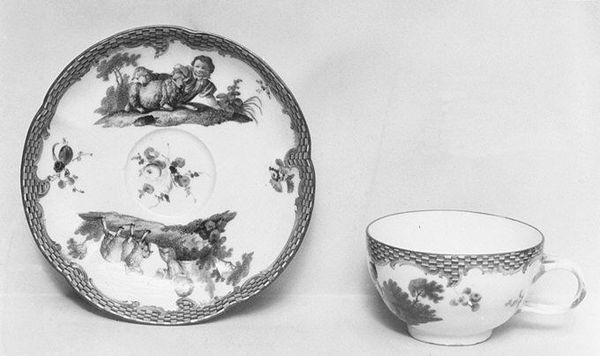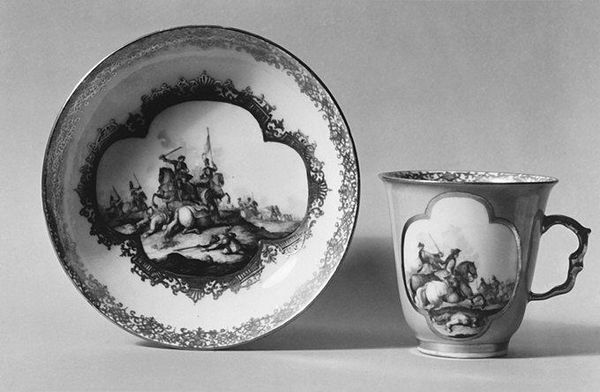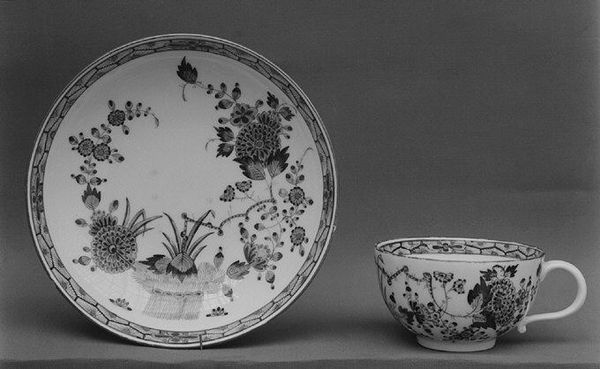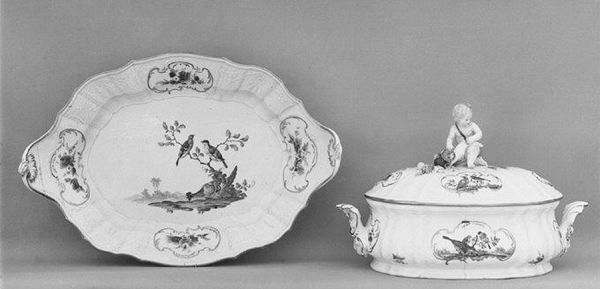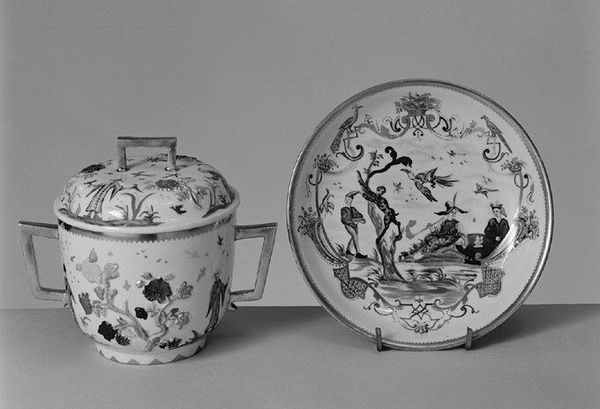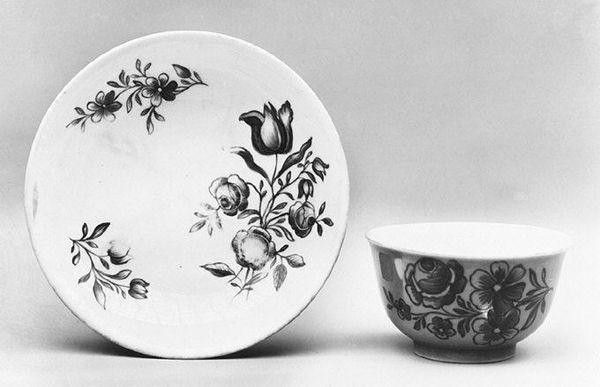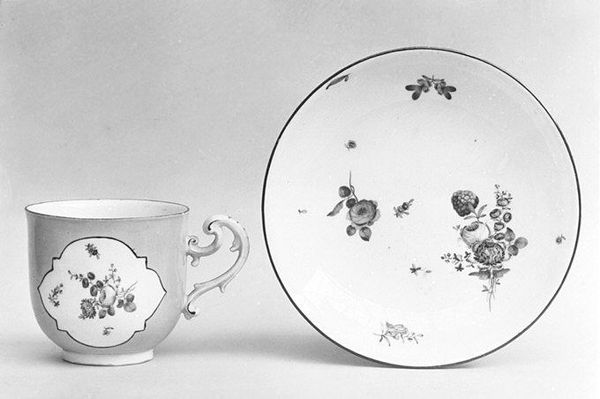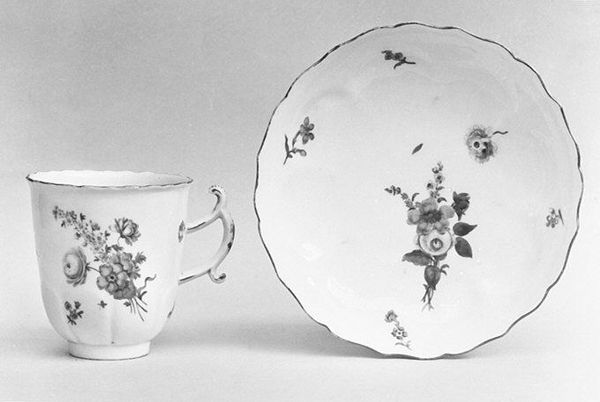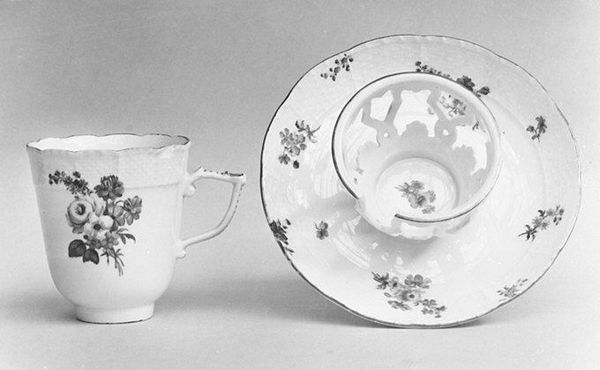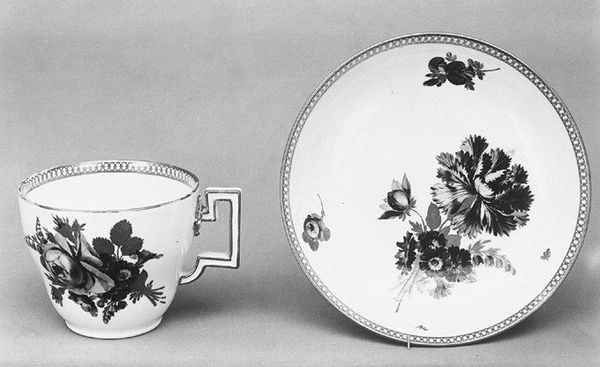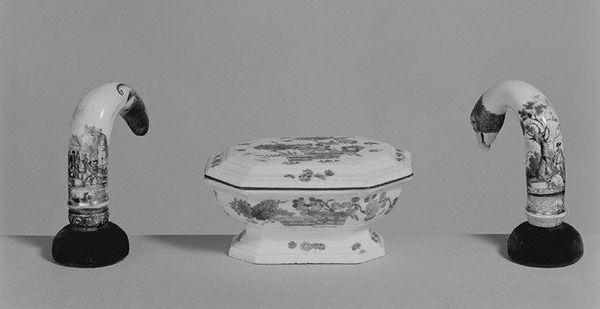
ceramic, porcelain, sculpture
#
asian-art
#
ceramic
#
porcelain
#
sculpture
#
decorative-art
Dimensions: 1 3/4 × 3 1/2 in. (4.4 × 8.9 cm)
Copyright: Public Domain
Editor: We’re looking at a porcelain bowl made by Meissen Manufactory between 1735 and 1745. It’s a delicate, almost whimsical piece. What I find striking is the contrast between the narrative scene on the lid and the geometric patterns around the bowl itself. How do you interpret the arrangement and decorations on this artwork? Curator: The appeal lies precisely in that interplay, which creates structural harmony through opposing visuals. Examine the bowl's outer pattern – a detailed latticework interspersed with stylized floral motifs. This creates an all-over surface tension contrasting to the lid. Note the scene depicted; figures rendered with fine detail suggesting human interaction that arrests our eye within that space. It offers depth and spatial recession. Editor: So, it's the tension between the static patterns and the dynamic figural scene that creates the interest? Is the choice of monochrome significant here as well? Curator: Precisely. The monochromatic palette reinforces a formal relationship between the two compositional structures; it brings them together rather than allowing them to compete. In its formalism it offers stability to a piece whose dynamism may overwhelm. Editor: That's fascinating, I hadn't considered how the colour restrictions play in creating structure and relationship across the separate elements. Curator: Reflect upon this constraint allowing depth through detail in an otherwise flattened color space – a very intriguing compositional choice of artistic integrity. Do you find a more holistic appreciation of its structured brilliance in formalism now apparent? Editor: I certainly do. Thank you for drawing out the way that formal elements create an impactful viewing experience in a decorative context.
Comments
No comments
Be the first to comment and join the conversation on the ultimate creative platform.
